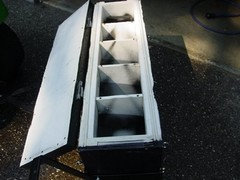

This, combined with lawn fertilization and other lawn care services, can help your lawn thrive. If you have a cool-season grass, you should aim for early fall. If your grass is a warm-season grass, you’ll want to do it in mid-spring to early summer during the beginning of its grow period. This depends on the type of grass you have.

How Core Aeration WorksĬore aeration – also known as plug aeration – uses a machine with hollow spikes or tines to punch into the earth and mechanically remove these cores or plugs of soil, roots, and thatch from the ground. This blog compares it to other options and explains why core aeration is the best lawn aeration option. There’s a lawn care solution for this: aeration. As root systems get denser and shed grass builds up, known as thatch, it may combine with soil compaction- this becomes harder and harder for water, nutrients, and even air to feed your grass. Grass is a living thing, and as such it sheds waste and grows just like any other plant. Repeat the aeration process once or twice a year to maintain a healthy lawn.If your lawn is flooding, suffocated on thatch, newly constructed, or your grass gets a lot of foot traffic, lawn aeration can help keep your lawn looking beautiful and improve the water flow in your topsoil. Step 4 – Water and maintainĪfter aerating, give your lawn a good amount of water to help the soil absorb moisture.
#SPIKE AERATOR VS PLUG AERATOR MANUAL#
If you’re using an electric aerator, we suggest following the guidance in the manual to ensure you do it properly. If you’re using a garden fork, manual spike aerator, or hollow tine aerator, cover the entire surface area with holes that are around five inches deep and leave a six inch gap between sections. You do have the issue with the plugs being left all over the yard but this is usually not a problem as they break down over time. If you’ve got a small garden, we recommend using a manual aerator such as a hollow tine aerator or garden fork. Spikes just push the dirt aside while plug aerators remove the dirt. However, you will need somewhere to store the machine and it might need regular maintenance. If you’ve got a particularly large garden, an electric aerator will let you cover a lot of ground in a short amount of time. This will depend on the size and condition of your garden’s grass. Step 2 – Prepare your toolsĬhoose your aerating method and tool. Dry soil is difficult to pierce, so we suggest aerating your lawn the day after a rain shower when the soil is soft. For best results, make sure the soil is moist. Avoid aerating during hot and dry periods, or excessively wet weather conditions. Pick a suitable time to aerate your lawn, ideally during spring or autumn when the grass is growing. Read this step-by-step guide on aerating your lawn. So, now you’re aware of the basics of lawn aeration… it’s time to take on the task yourself.


 0 kommentar(er)
0 kommentar(er)
